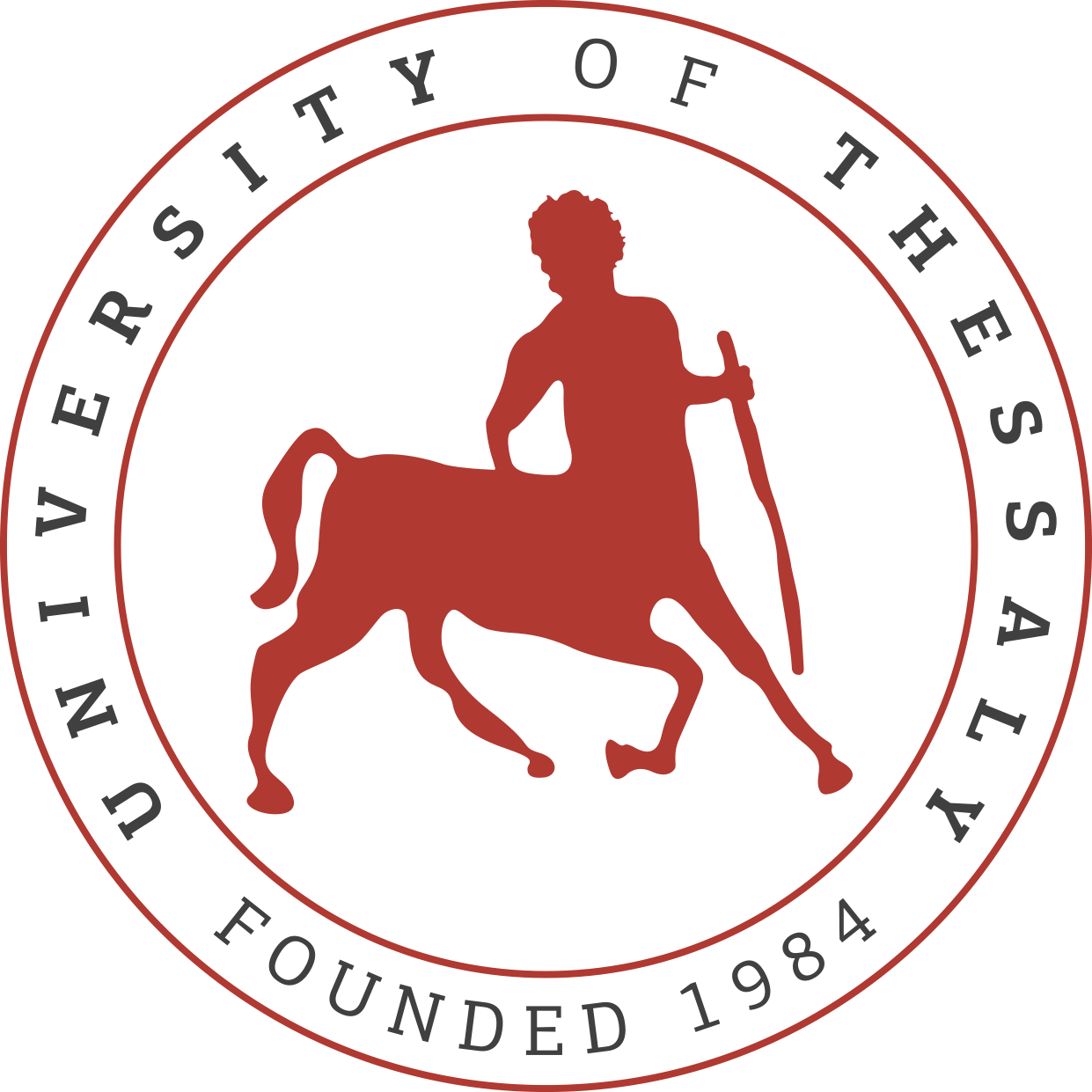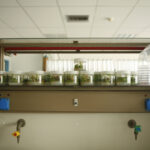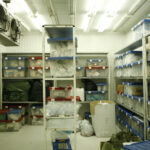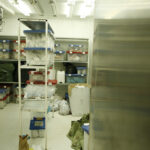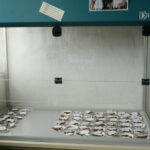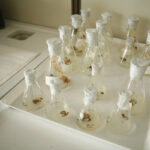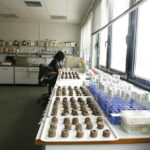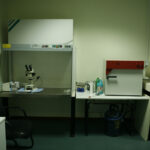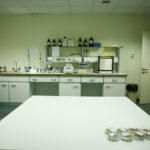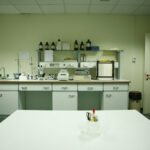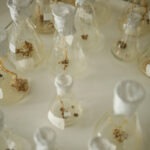Laboratory of Genetics and Plant Breeding
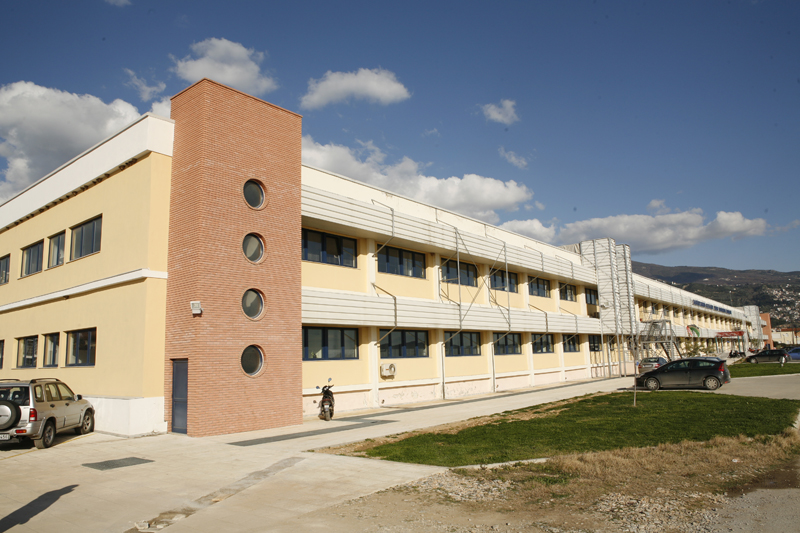
Laboratory of Genetics and Plant Breeding
Director: Dr. Pavli Ourania , Assisiate Professor
Laboratoty Mission
The aim of laboratory of Genetics & Plant Breeding is the education of under and postgraduate students for understanding the modern conventional and biotechnological approaches on Plant Breeding and Seed production of Field Crops. Special emphasis is given at approaching plant breeding by an holistic viewpoint, including the employment of modern technologies and applications such as the marker-assisted selection, breeding for resistance, organic breeding, application of induced mutations, grafting in vegetable crops as well as production of transgenic (GM) plants. In addition, the laboratory covers all essential aspects of plant propagation technology, including seed physiology, ecology, technology and seed storage, artificial seed as well as seed improvement (priming, pelting) and processing (cleaning, scarification, sizing, and coating) techniques.
Research
Collection and exploitation of genetic resources
Applications of Organic Plant Breeding schemes and development of tolerance under low input conditions and abiotic stress
Production of propagating material and applications of seed technology
Variety evaluation and application of Breeding methodologies in various cultivated crops
Study and evaluation of grafting in vegetative crops
Physiology and viability of seeds
Applications of in vitro culture in Plant Breeding
Molecular Breeding – Genetic analysis and determination of variety genetic identity and purity
Modern applications of conventional and biotechnological methodologies in Plant Breeding and Seed Production of crops
GMO testing and detection
Evaluation of resistance against biotic and abiotic stresses
Study of plants’ response to stress in the transcriptomic, proteomic and metabolic level
Applications of gene silencing in Plant Breeding
Production of Genetically Modified plants via stable and transient genetic transformation (A. tumefaciens – A. rhizogenes)
Applications of bioinformatics in Plant Breeding
Research Results/ Products
- Development of drought resistant varieties through biotechnological approaches and field experiments in relation to fibre and seed quality
- Development of controlled deterioration test for predicting seedling emergence and longevity in cotton, soybeans, corn, sunflower, alfalfa crops
- Development of growth media incorporating cotton ginning by-products for vegetable production
- Developing methods for improving and overcoming the problem of seedhardness in okra seeds
- Development of methods for improvement of quality of production in seedcotton
Research Projects
- Project named PENED No. 91 ED 392: ‘Combined selection HS, S1 and TC families in maize population for reduced nitrogen requirements” (finance GSRT).
- Project No. P94001: ‘Study of adaptability of sugar beet varieties in Thessaly and evaluation and its yield’.
- Research Committee UTH
(I) ‘Improving Variety and seed production in the conditions of traditional agriculture in Thessaly
(II) Methodology to determine the genetic purity of certified hybrids seed corn.
- Project Named PENED 95 ‘selection methodology for creating corn germplasm with tolerance to the limit temperatures’ (158150 ERE/383).
- Program E + T Cooperation. China and Greece (2000-2002) Creation of molecular markers and evaluation of resolution to select genotypes of the genus Actinidia. (A: 6034/00, 30-10-2000, GSRT).
- Research project ‘Plant molecular Genetics for an environmentally compatible agriculture’ Greek node, Theme E2. EU funding
- COST 828. ‘Seed science in the Field of Genetically Controlled Stress’. National Representative and participate in the Working Group ‘Field crops of cross pollinated species’ as coordinator of Greek research team.
- INCO-DOC ‘Collection, Evaluation and Cryopreservation of Germplasm of the Genus Actinidia and Breeding Novel Kiwifruit’. Coordinator of Greek Research Group (ERB 3514PL961475).
9. Within TEMPUS, participated in the S-JEP11446-96 as coordinator of the Research Group of the University of Thessaly. - Dimitra 95 (Decision 5/15-11-96 Board NAGREF) Creation of Soft Wheat Variety incorporating genes from related species.
- Utilization of genetic variability Greek varieties vegetable crops by creating sorting resistant to biotic and abiotic factors.
- PENED 95 ‘Rating corn hybrids for the effective utilization of residual NO3-N (158,150 ERE/383).
- Project number 4347 entitled: research study on improvement and efficiency programme for breeding and production as well as seed propagation materials (BREEDSEED) 09ΣΥΝ-22-958
- ΚΕ3185 – « Genetic evolution and identify of new variety of Kiwi through DNA analysis»
- Participate in 2ndNationalpublishing of F.A.O for genetic and resources in agricultural crops (2006)
- ΚΕ3935‐01 Developing DNA profile map for cotton.
- ΚΕ3935 -02 Improvement and preservation of cotton genetic material through different field experiments.
Publications
Ebrahim Avraam Khah
Tsiakaras, G., Petropoulos, S.A., Khah, E.M. 2014. Effect of GA3 and nitrogen on yield and marketability of lettuce (Lactuca sativa L.). Australian Journal of Crop Science 8(1):127-132
Bilalis, D.J., Katsenios, N., Efthimiadou, A., Karkanis A, Khah, E.M., Mitsis, T. 2013. Magnetic field pre-sowing treatment as an organic friendly technique to promote plant growth and chemical elements accumulation in early stages of cotton. Australian Journal of Crop Science 7(1):46-50
Khah, E.M., Petropoulos, S.A., Karapanos, I.C., Passam, H.C. 2012. Evaluation of growth media incorporating cotton ginning by-products for vegetable production. Compost Science and Utilization 20(1):24-28
Petropoulos, S.A., Khah, E.M., Passam, H.C. 2012. Evaluation of rootstocks for watermelon grafting with reference to plant development, yield and fruit quality. International Journal of Plant Production6(4):481-492
Zaxos, D., Kostoula, S., Khah, E.M., Mavromatis A, Chachalis, D., Sakellariou, M. 2012. Evaluation of seed cotton (Gossypium hirsutum L.) production and quality in relation to the different irrigation levels and two row spacings. International Journal of Plant Production 6(1): 129-148
Ourania Ι. Pavli
Labrou N.E., Papageorgiou A.C., Pavli O., Flemetakis E. (2015). Plant GSTome: structure and functional role in xenome network and plant stress response. Current Opinion in Biotechnology, 32: 186-194
Kissoudis C., Kalloniati C., Pavli O., Flemetakis E., Madesis P., Labrou N.E., Skaracis G., Tsaftaris A., Nianiou-Obeidat I. (2015).Stress-inducible GmGSTU4 shapes transgenic tobacco plants metabolome towards increased salinity tolerance. Acta Physiologiae Plantarum, 37, Article 128: 1-15
Pavli O.I., Vlachos C.E., Kalloniati C., Flemetakis E., Skaracis G.N. (2013). Metabolite profiling reveals the effect of drought on sorghum (Sorghum bicolor L. Moench) metabolism. Plant Omics Journal, 6(6): 371-376.
Pavli O.I., Tampakaki A., and Skaracis G.N. (2012). High level resistance against rhizomania disease by simultaneously integrating two distinct defense mechanisms. PLoS ONE, 7(12) e51414: 1-6
Pavli O.I., Kelaidi G.I., Tampakaki A.P. and Skaracis G.N. (2011). The hrpZ gene of Pseudomonas syringae pv. phaseolicolaenhances resistance to rhizomania disease in transgenic Nicotiana benthamiana and sugar beet. PLoS ONE, 6(3) e17306: 1-9
Courses
UNDERGRADUATE COURSES
“Genetics” 3rd Semester
"Plant Breeding" 6th Semester
“Seed Physiology, Ecology and Technology” 7th Semester
“Special Plant Breeding and Seed Production of Agricultural and Horticultural Crops” 8th Semester
POSTGRADUATE COURSES
“Modern Trends in Genetics and Technology of Recombinant DNA”
“Plant Breeding and Novelties in Seed Production and Seed Technology of Vegetative, Ornamental and Field Crops”
“Modern Methods for the Production of Propagating Material”
